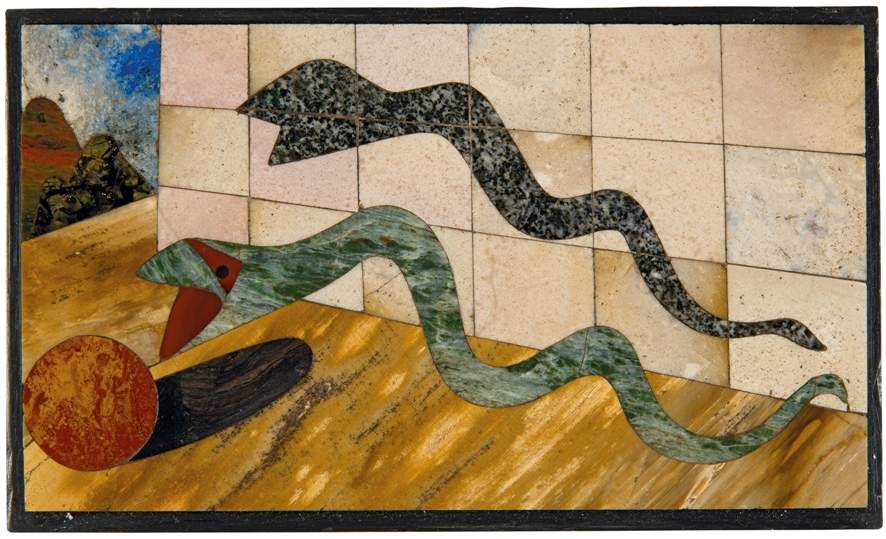In Florence, the twentieth century of the Opificio delle Pietre Dure in a small exhibition
From December 11, 2018, to May 4, 2019, the Museo dell’Opificio delle Pietre Dure is hosting the exhibition Il Novecento per il Museo dell’Opificio delle Pietre Dure, which aims to retrace a particular moment in the history of the Florentine institute. In the early 1950s, in fact, at the Opificio delle Pietre Dure some experiences of reviving the technique of commesso matured. The aim was to renew in a contemporary key the ancient tradition of the historic Manifattura, born in 1588 under Ferdinando I de’ Medici, while also enriching with new artistic and cultural instances the Museum’s collection, which had reopened after the war only in 1952, with the new layout by director Lando Bartoli and art historian Edward A. Maser. With this in mind, a competition was announced on November 10, 1953, for semiprecious and tender stone tiles and sketches to be made in commesso. A number of young Florentine artists responded enthusiastically, participating and up-to-date with respect to the figurative proposals of that moment so rich in vital forces.
The results are now presented in the small exhibition housed in the rooms of the Museum of the Opificio delle Pietre Dure, set up on a project by the Florence-based P&M architecture srl studio. The exhibition is accompanied by a catalog published by Sillabe, in which those mid-twentieth-century events are retraced and contextualized, proposing an analysis that involves technical and more properly historical-critical aspects. A microcosm that testifies to the revival of interest in the applied arts of that precise historical period, through the revaluation of a so-called “minor” art that “minor” never was.
On display on the Museum’s upper floor are four color sketches, three drawings with related transparencies, and 16 semiprecious and tender stone tiles. Concluding the series of 23 works is the tile whose sketch by Alvaro Monnini, won first prize in the competition. Monnini was the most lyrical and narrative of the exponents of Classical Abstractionism, and the model represents a very effective synthesis of his painting, with the presence of the comb sign that later became almost an emblem of it. The chosen theme, the dance, contained within itself and in the fragmented course of space the rhythmic sense that was from then on always the protagonist of his most successful compositions and that also carried with it the memory of Futurist dynamism. The tile was made in the Opificio’s workshop by Giancarlo Raddi delle Ruote and Piero Frizzi, who, in order to choose the most suitable stones, went specifically to Montaione and there identified the alabaster that would later be used in the dancers’ robes, the trees and the frame.
The small exhibition also allows visitors to retrace the execution steps that have always been characteristic of the technique that has made the Opificio world famous. It can be visited Monday through Saturday from 8:15 a.m. to 2 p.m. (last entry at 1:30 p.m.), closed Sundays and holidays. Tickets: full 4 euros, reduced 2 euros.
Pictured: Opificio delle Pietre Dure, Mosaic and Commodity Restoration Workshop in semi-precious stones (based on a sketch by Lando Bartoli), Composition with snake and sphere (1952; hard and soft stones, 13 × 21.6 cm; Florence, Museo dell’Opificio delle Pietre Dure)
 |
| In Florence, the twentieth century of the Opificio delle Pietre Dure in a small exhibition |
Warning: the translation into English of the original Italian article was created using automatic tools. We undertake to review all articles, but we do not guarantee the total absence of inaccuracies in the translation due to the program. You can find the original by clicking on the ITA button. If you find any mistake,please contact us.





























